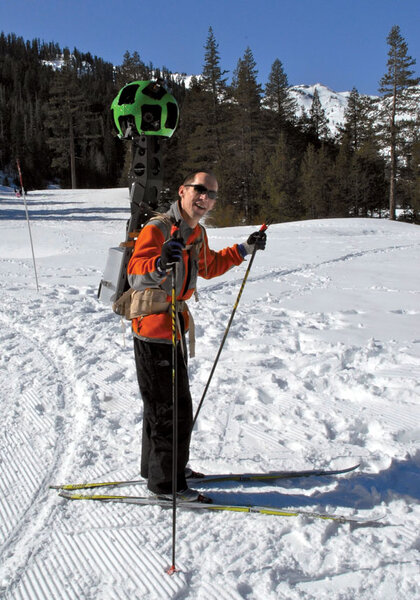Google maps go off-road, in-doors, and to Antarctica
Loading...
Interested in checking out Antarctica?
Just as Google sent a swarm of computers to map the Internet, the company has hired a high-tech army to chart the real world. Satellites snapped a bird's-eye view of the globe. A fleet of cars equipped with cameras captured storefronts and homes. Then Google tricycles, snowmobiles, and trolleys ventured to places where cars are not welcome.
Now, the search company has unveiled two new tools that extend its reach and push the boundaries of what can be digitized. Google deployed special backpacks to map wayward trails and the insides of buildings, expanding its street-view imagery to places without streets. It also unveiled a new way to create 3-D models of entire cities, accurately capturing skyscrapers, elevation, and even landscaping.
"We're shooting for literally the whole world," says Brian McClendon, vice president of engineering for Google Maps, in announcing the updates. "By the end of the year we aim to have 3-D coverage for metropolitan areas with a combined population of 300 million people."
Despite privacy concerns and lawsuits from people wishing to be removed from Google's digital atlas, the company has made mapping a key focus.
This week, Google unveiled 360-degree panoramic views of Antarctica, bringing penguins, ice fields, and the ceremonial South Pole to armchair explorers.
Upcoming versions of its Android phone software will feature off-line maps. The addition alleviates a major problem with mobile road maps. Global-positioning information works just about everywhere in the world, but cell service does not. This leads to sticky situations where the phone knows exactly where you are, but it can't download a map to show you. Google's off-line service will let people save a section of the map to their phones before heading into places without service, such as country roads, hiking trails, or foreign cities.
While these maps come free of charge, Google makes money off local listings and through licensing deals with companies such as Apple, which uses the maps in its iPhones and iPads. Just a week after Google announced 3-D cities, however, Apple revealed that it has been secretly working on its own map service, which will replace Google's in the next iPhone.
The Apple atlas will feature 3-D maps and offer free turn-by-turn directions. Apple Maps, which will debut this fall, also borrows a trick from Google: It provides real-time traffic reports by scanning and locating the iPhones that are already on the road. If multiple iPhone users are stuck behind an accident, Apple will alert other iPhone owners of the backup.
For more on how technology intersects daily life, follow Chris on Twitter @venturenaut.
[Editor's note: This is an updated version of an article that appeared in the July 23 issue of the Monitor weekly magazine.]






